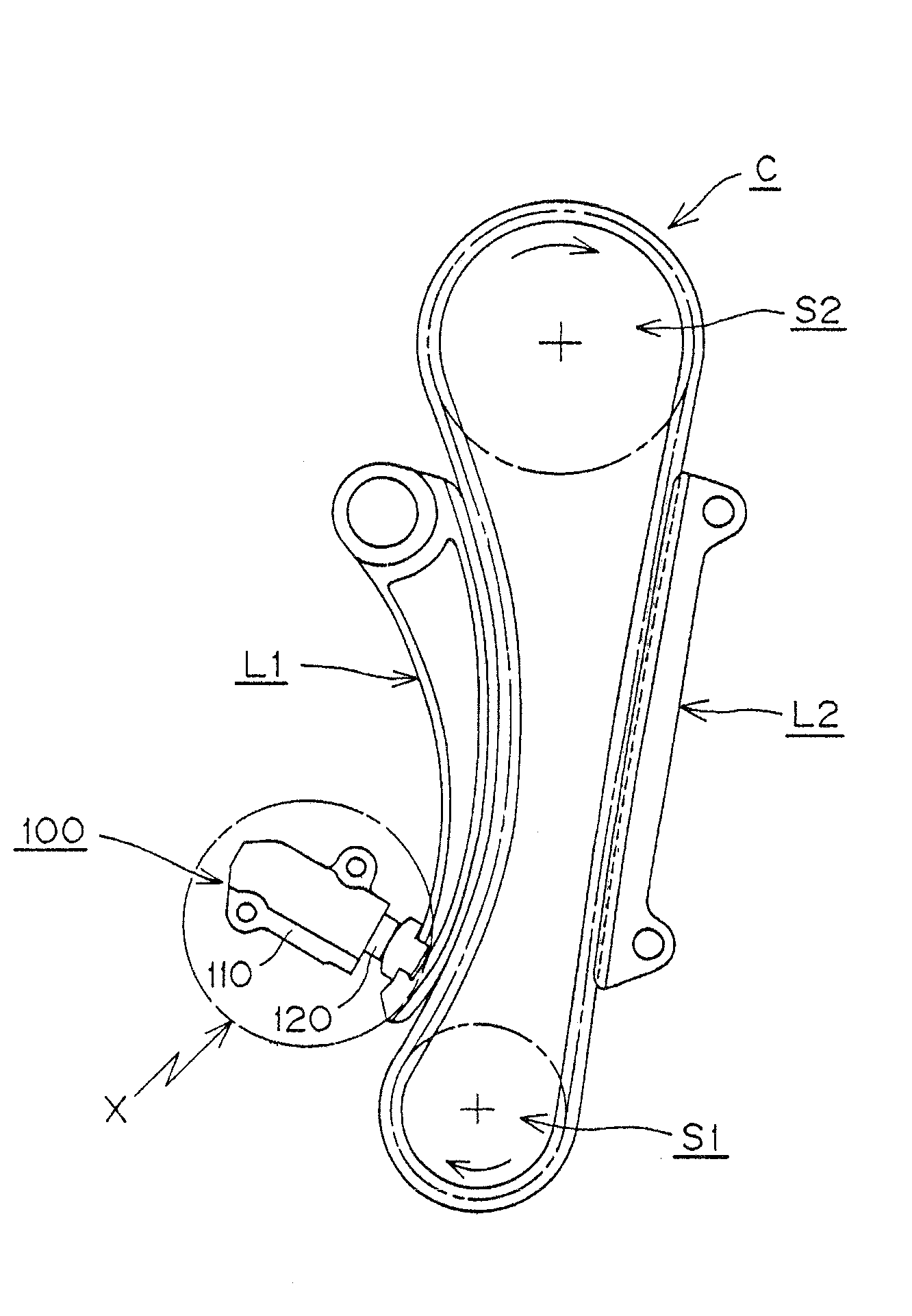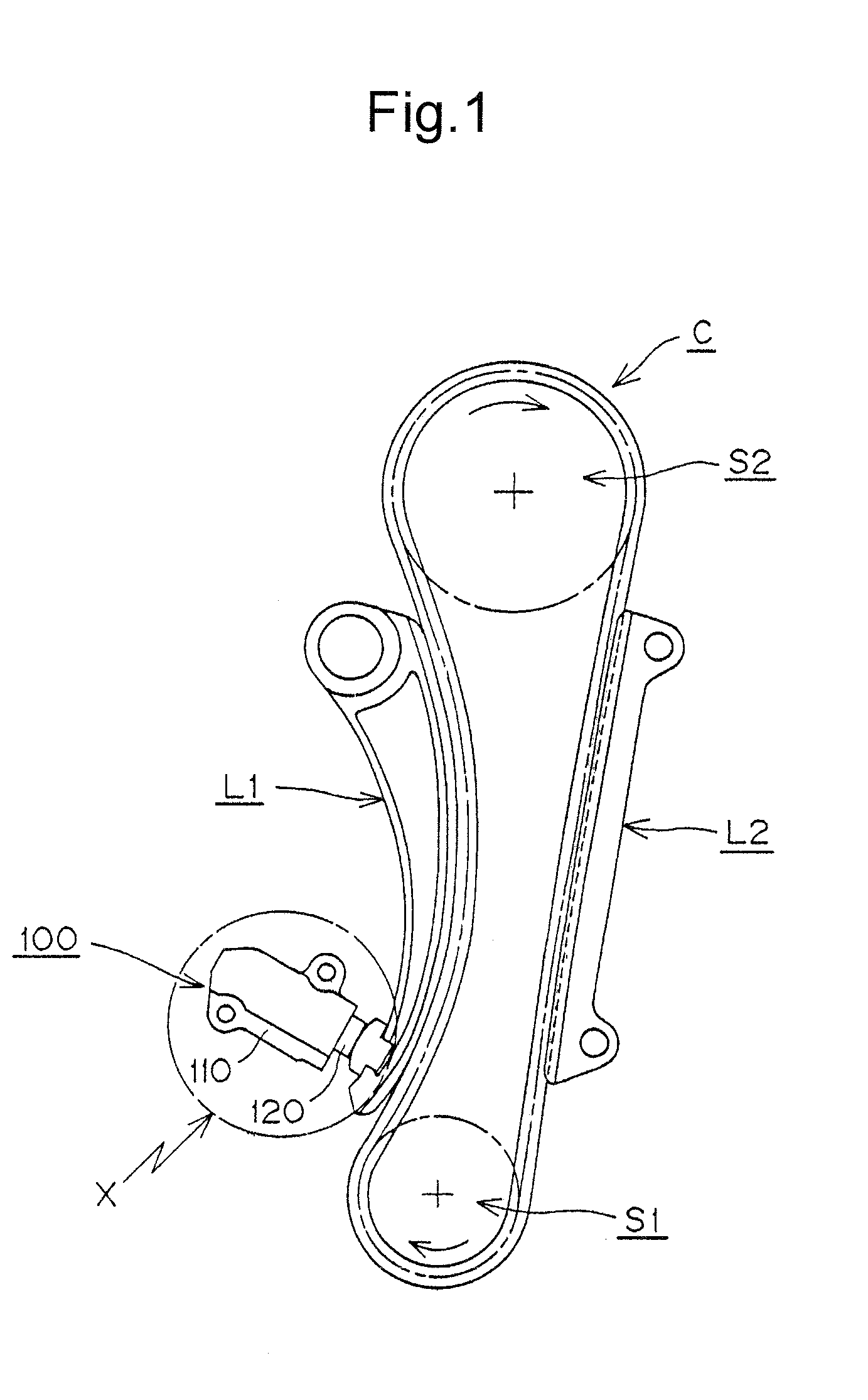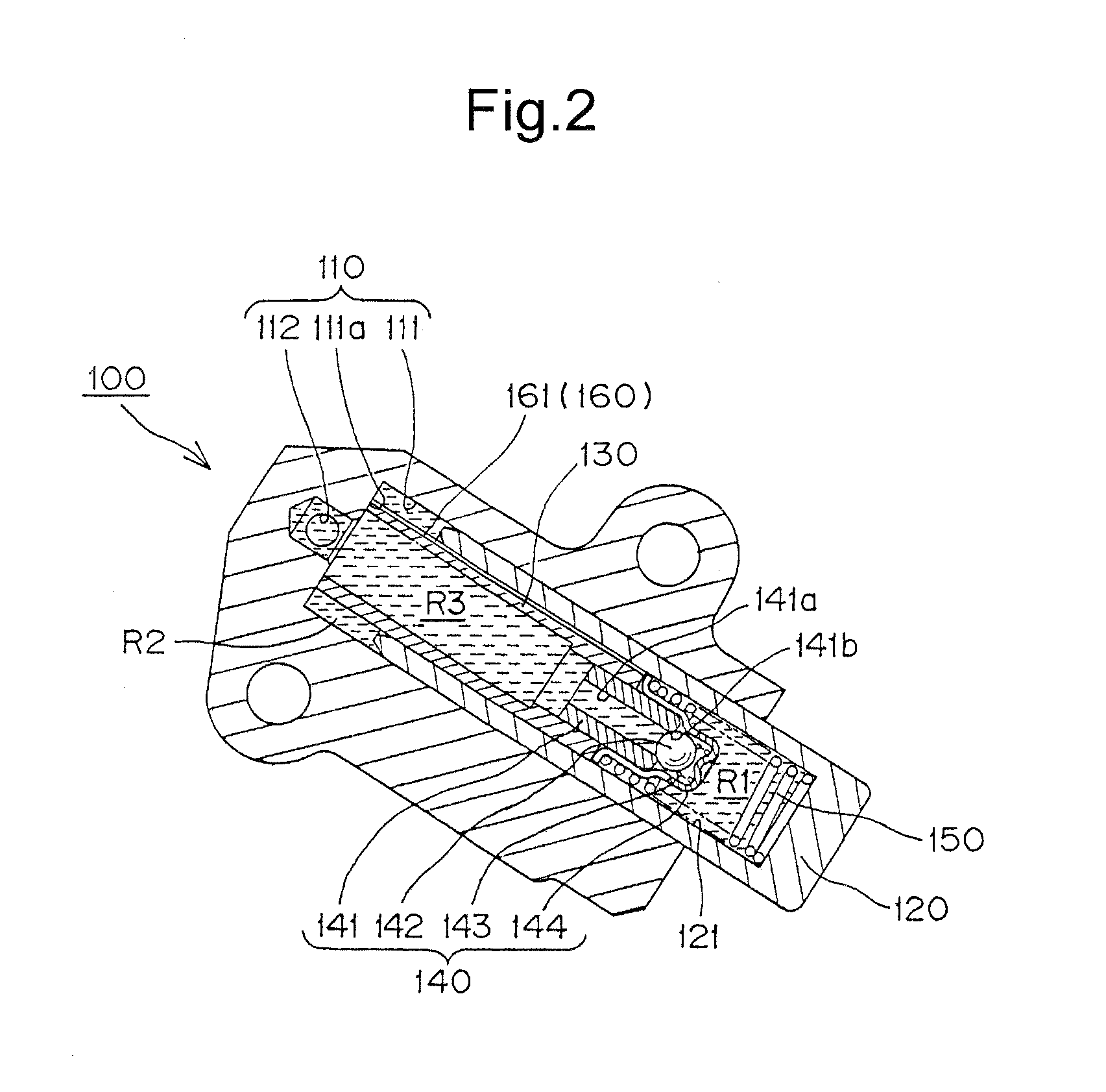Downward angle settable hydraulic tensioner
a hydraulic tensioner and downward angle technology, applied in the direction of belts/chains/gearrings, mechanical equipment, belts/chains/gearrings, etc., can solve the problems of excessive backlash, abnormal sound generation, impaired damping effect of the tensioner, etc., to prevent the backlash of timing chains, the damping performance is maintained, and the plunger is rapidly balanced
- Summary
- Abstract
- Description
- Claims
- Application Information
AI Technical Summary
Benefits of technology
Problems solved by technology
Method used
Image
Examples
Embodiment Construction
[0042]As shown in FIGS. 1 and 2, a downward angle settable hydraulic tensioner 100, according to a first embodiment of the invention, is mounted on an engine body on the slack side of a timing chain C engaged with a driving sprocket S1 rotated by a crankshaft, and a driven sprocket S2 fixed to a camshaft. The sprockets rotate in the direction indicated by the arrows in FIG. 1. The plunger 120 of the tensioner protrudes extendibly and retractably from the front of the housing 110. The plunger engages a pivoted lever L1, on which the slack slide of the chain slides, at a location spaced from the lever's pivot axis, thereby maintaining tension in the chain. A fixed guide L2 is in sliding engagement with the tension side of the chain.
[0043]As shown in FIG. 2, the plunger 120 is slidable in, and protrudes from, a plunger-accommodating hole 111 formed in a tensioner housing 110 and having a closed end. A cylindrical hollow portion 121 is formed inside the plunger, having an opening facing...
PUM
 Login to View More
Login to View More Abstract
Description
Claims
Application Information
 Login to View More
Login to View More - R&D
- Intellectual Property
- Life Sciences
- Materials
- Tech Scout
- Unparalleled Data Quality
- Higher Quality Content
- 60% Fewer Hallucinations
Browse by: Latest US Patents, China's latest patents, Technical Efficacy Thesaurus, Application Domain, Technology Topic, Popular Technical Reports.
© 2025 PatSnap. All rights reserved.Legal|Privacy policy|Modern Slavery Act Transparency Statement|Sitemap|About US| Contact US: help@patsnap.com



